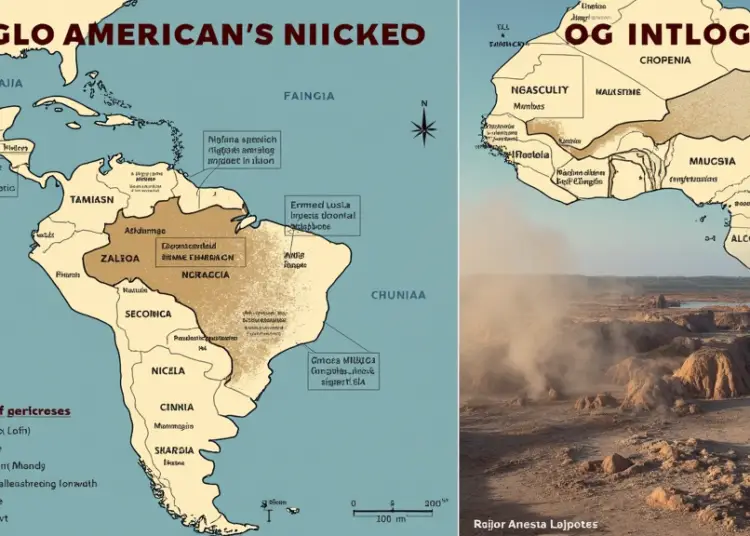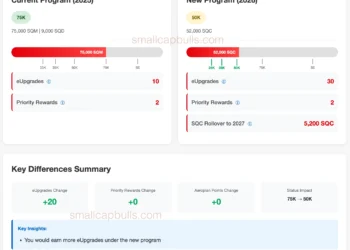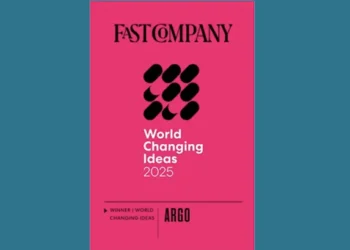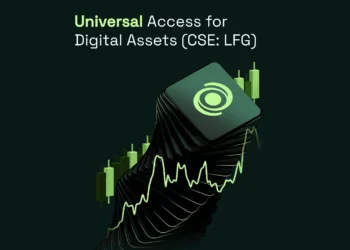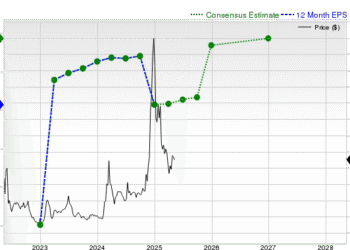In a strategic shift aimed at streamlining operations, Anglo American has completed the sale of its nickel division for US$500 million to a Singapore subsidiary of MMG. This significant nickel business divestment encompasses the company’s ferronickel operations in Brazil, specifically at Barro Alto and Codemin, along with promising greenfield projects like Jacaré and Morro Sem Boné. The completion of this transaction not only highlights Anglo American’s proactive approach towards optimizing its asset portfolio but also illustrates a focused commitment to its core strategy centered on copper and premium iron ore. With a projected collective output of 39,400 tonnes of nickel in 2024, this move positions Anglo American advantageously within the evolving nickel market. As they redirect resources and efforts, the company anticipates further growth opportunities tied to their ongoing development projects.
In a notable pivot within the mining sector, Anglo American has chosen to divest its nickel segment, marking a crucial step in refining its operational framework. This strategic move involves the sale of their ferronickel assets located in Brazil, reflecting their intent to concentrate on more lucrative ventures such as copper and iron ore. The acquisition by MMG not only reinforces their footprint in Latin America but also adds essential diversification to their operations. With upcoming greenfield initiatives on the horizon, the nickel business’s transfer emphasizes a promising evolution for both companies involved. As markets shift and sustainability remains a priority, this transaction showcases the dynamic nature of the mining industry.
Anglo American Nickel Sale Overview
In a strategic move to streamline its portfolio, Anglo American has finalized the sale of its nickel division to a subsidiary of MMG for a substantial US$500 million. This transaction marks a pivotal transition for Anglo American as it shifts focus towards more lucrative sectors such as copper, premium iron ore, and agricultural nutrients. The nickel division includes key assets such as the Barro Alto and Codemin ferronickel operations in Brazil, alongside promising greenfield projects like Jacaré and Morro Sem Boné. This divestment effectively enables Anglo American to concentrate its resources and investments on areas that are projected to drive greater profitability in the future.
This sale follows a competitive bidding process and aligns with the company’s broader strategy to enhance shareholder value. By divesting segments that no longer align with its core objectives, Anglo American is not only simplifying its operational structure but also setting the stage for accelerated growth in its remaining assets. The cash consideration of US$350 million upfront, coupled with potential performance-linked payments, underscores the strategic financial maneuvering characteristic of Anglo American’s current corporate approach.
Impact on the Nickel Market and Ferronickel Operations
The acquisition of Anglo American’s nickel division by MMG is poised to significantly impact the nickel market, particularly through the operation of its ferronickel plants in Brazil. With the Barro Alto mine and Codemin facilities producing a combined total of 39,400 tonnes of nickel in 2024, MMG steps into a vital role in delivering high-quality nickel to meet the growing global demand. Ferronickel, a key raw material in stainless steel production, is critical to various industries, and MMG’s enhancement of these operations could stabilize prices amid fluctuating market conditions.
Moreover, the robust mineral resources at Jacaré and Morro Sem Boné provide MMG with vital growth opportunities in the nickel sector. With approximately 300 million tonnes and 65 million tonnes of mineralization potential respectively, these projects offer significant upside for future production. By integrating these assets, MMG not only diversifies its operational base but also reinforces its strategic position within the Latin American market, further influencing the global nickel supply chain.
Strategic Goals of Anglo American’s Divestment
Duncan Wanblad, CEO of Anglo American, emphasized that the divestment of the nickel division is a crucial step toward achieving a streamlined operational focus. As the company pivots away from commodity sectors that do not align with its long-term vision, this strategic shift aims to optimize value creation for shareholders. The decision to sell the nickel business is part of a larger effort that anticipates generating up to US$5.3 billion from recent divestitures, including steelmaking coal, showcasing Anglo American’s commitment to focusing on premium and high-demand resources.
By simplifying its asset portfolio, Anglo American is poised to unlock the inherent value of its core businesses. This strategic reflex not only addresses market dynamics but also improves overall operational resilience. The company’s alignment towards copper and iron ore, known for their robust market demand, signals a future conducive to sustainable financial performance. It transforms Anglo American into a more agile player capable of navigating the complexities of the mining industry.
The Financial Structure of the Anglo American Sale
The agreed cash consideration for Anglo American’s nickel division includes a substantial upfront payment of US$350 million, with the potential for an additional payment of up to US$100 million contingent on market performance. Furthermore, a contingent cash consideration of approximately US$50 million linked to the final investment decision for new development projects highlights the strategic financial planning behind the sale. This layered financial structure not only incentivizes good operational performance but also aligns both parties’ interests in maximizing the future profitability of the nickel assets.
This multi-tiered financial arrangement showcases Anglo American’s commitment to ensuring that stakeholders extract maximum value from the transaction while mitigating risks inherent in the volatile nickel market. By implementing such measures, Anglo American proves its agility and strategic foresight in a competitive industry. Additionally, the deal underscores the significant value placed on high-quality nickel operations, setting a benchmark for future acquisitions in the sector.
MMG’s Vision for Nickel Operations
Cao Liang, the CEO of MMG, expressed enthusiasm regarding the acquisition of Anglo American’s nickel division, indicating a broader vision to expand the company’s presence in the Latin American market. With established ferronickel operations, MMG aims to bolster its operational portfolio through effective management and innovation. The acquisition of this solid business, complemented by a talented team, represents a strategic move to not only enhance market diversification but also reinforce MMG’s commitment to sustainability and operational excellence, aligning with the values set forth by the International Council on Mining and Metals.
Through this acquisition, MMG is poised to leverage Anglo American’s proven operational strategies and workforce expertise to extract maximum value from its new nickel assets. By pursuing excellence in sustainability performance, MMG aims to maintain high standards of environmental stewardship while increasing production capabilities. This commitment highlights MMG’s long-term vision for growth within the competitive landscape of the nickel market, solidifying its status as a key player in both the regional and global arenas.
Future Prospects for Nickel Production
The future prospects for nickel production are distinctly promising, especially as the demand for sustainable and ethically sourced materials increases globally. MMG, with its acquisition of Anglo American’s nickel division, stands poised to tap into this burgeoning market. The acquisitions of the Barro Alto and Codemin operations, along with the development potential of Jacaré and Morro Sem Boné, furnish MMG with a robust platform from which to enhance production capacities while adhering to sustainable practices.
As the global market leans heavily towards electrification and renewable energy technologies, the need for nickel—an essential component in batteries—is expected to soar. MMG’s strategic investments in its newly acquired assets could position the company as a forefront supplier in this transitional era of energy production. By optimizing operations and capitalizing on technological advancements, MMG can significantly influence the nickel market in the coming years, promoting growth while contributing to sustainable development targets.
Conclusion: Strategic Moves in the Nickel Sector
This significant transaction, involving the sale of Anglo American’s nickel business to MMG, illustrates just how dynamic the nickel sector has become. The strategic divestment aligns with the pressing need for mining companies to adapt to fluctuating market demands while enhancing operational efficiencies. By focusing on high-potential areas such as copper and iron ore, Anglo American is not only simplifying its portfolio but also setting a precedent for how mining companies can realign in pursuit of total value transparency.
Similarly, MMG’s acquisition of Anglo American’s nickel division reflects a strategic foresight to establish a more diversified operational base. This move, intertwined with an unwavering commitment to sustainability and excellence, paves the way for MMG’s growth in a market expected to witness significant demand shifts. The evolving landscape of the nickel market demands agility and innovation, traits that both Anglo American and MMG seem poised to capitalize on effectively.
Frequently Asked Questions
What prompted Anglo American to sell its nickel division?
Anglo American sold its nickel division as part of a strategic initiative to streamline its operations and focus on high-value assets such as copper and premium iron ore. This nickel business divestment aims to enhance the company’s overall portfolio value.
What does the Anglo American nickel sale include?
The Anglo American nickel sale includes two ferronickel operations in Brazil, Barro Alto and Codemin, along with two greenfield growth projects, Jacaré and Morro Sem Boné, which hold significant mineral resources.
How much did Anglo American receive from the nickel sale?
Anglo American received US$500 million for its nickel business, with US$350 million paid upfront at closing. Additional contingent payments could total up to US$150 million based on price performance and development decisions.
What are the implications of the MMG acquisition for the nickel market?
The MMG acquisition of Anglo American’s nickel division could enhance competition and diversification within the nickel market, as MMG aims to leverage the strong resource base in Brazil to boost its operations and market presence.
What is the strategic focus of Anglo American following the nickel divestment?
Post nickel business divestment, Anglo American’s strategy is concentrated on core areas like copper, premium iron ore, and crop nutrients, aiming to create a more resilient and agile company with heightened investment appeal.
What are the expected growth opportunities from the Jacaré and Morro Sem Boné projects?
Jacaré and Morro Sem Boné projects are estimated to hold substantial mineral resources, approximately 300 million tonnes and 65 million tonnes, respectively, offering significant growth opportunities for future nickel production.
Who expressed interest in the MMG acquisition and why?
Cao Liang, the chief executive of MMG, expressed enthusiasm about acquiring Anglo American’s nickel business, highlighting its potential for operational diversification and growth, particularly in Latin America.
What previous divestment shares a timeline with the Anglo American nickel sale?
The sale of Anglo American’s nickel division coincides with the contracts signed in November 2024 for divesting its steelmaking coal business, collectively generating an expected total of up to US$5.3 billion in cash proceeds.
How will the Anglo American nickel sale affect its operational structure?
The Anglo American nickel sale is part of a broader restructuring to simplify its operations, aiming for clearer value transparency and a focused portfolio that enhances operational efficiency.
What advantages does Anglo American see from focusing away from nickel?
By divesting its nickel division, Anglo American anticipates greater operational synergies and an increased focus on commodities that align with global demands, simplifying its portfolio for strategic growth and investment.
| Key Points |
|---|
| Anglo American sold its nickel division for US$500 million to MMG, a Singapore subsidiary. |
| The nickel business includes operations and projects in Brazil: Barro Alto, Codemin, Jacaré, and Morro Sem Boné. |
| In 2024, the operations produced 39,400 tonnes of nickel. |
| Barro Alto and Codemin produced ferronickel, while Jacaré has mineral resources of 300 million tonnes and Morro Sem Boné has 65 million tonnes. |
| The sale terms include an upfront payment of US$350 million, with potential additional payments based on performance. |
| Duncan Wanblad emphasized that this sale simplifies Anglo American’s portfolio toward more valuable sectors like copper and iron ore. |
| MMG’s CEO, Cao Liang, highlighted the acquisition’s role in diversifying MMG’s operations and enhancing their Latin America presence. |
Summary
The Anglo American nickel sale marks a pivotal step in the company’s strategy to streamline operations and concentrate on core business areas. The transaction, valued at US$500 million, represents not only a significant financial maneuver but also a shift towards enhancing portfolio value through selective divestitures. With the sale of its nickel division, which includes substantial mining operations in Brazil, Anglo American aims to focus more intensely on lucrative sectors like copper and premium iron ore. This move showcases a broader trend in the mining industry toward consolidation and specialization, ensuring that the company remains competitive in the evolving market landscape. As Anglo American continues to refine its operations, the nickel sale aligns with their vision of achieving a more resilient and agile business model.
